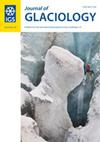Spatial pattern of glacier mass balance sensitivity to atmospheric forcing in High Mountain Asia
IF 2.6
3区 地球科学
Q2 GEOGRAPHY, PHYSICAL
引用次数: 0
Abstract
Abstract The complex topography and size of High Mountain Asia (HMA) result in large differences in glacier mass-balance variability and climate sensitivity. Current understanding of these sensitivities is limited by simplifications in past studies’ model structure. This study overcomes this limitation by using a mass-balance model to investigate the climatic mass-balance variability and climate sensitivity of 16 glaciers covering major mountain ranges in HMA. Generally, glaciers in the southeast have higher mass turnover while glaciers at the margins of HMA show higher interannual mass-balance variability. All glaciers are most sensitive to temperature perturbations in summer. The climatic mass balance of 15 glaciers is most sensitive to precipitation perturbations in summer or spring and summer, even if the seasonal accumulation peak is not in summer. Only one glacier's mass balance (Chhota Shigri Glacier) is most sensitive to precipitation perturbations in winter. Glaciers with high mass turnover and high summer-precipitation ratio are more sensitive to temperature perturbations. Sensitivity experiments reveal that besides the non-linearity of mass-balance temperature sensitivity, mass-balance precipitation sensitivity is non-linear as well. Furthermore, resolving the diurnal cycle of albedo, (re)freezing and the differentiation between liquid and solid precipitation are important to assess climate sensitivity of glaciers in HMA.亚洲高山冰川物质平衡对大气强迫敏感性的空间格局
亚洲高山地区复杂的地形和面积导致冰川物质平衡变率和气候敏感性存在较大差异。目前对这些敏感性的理解受到过去研究模型结构简化的限制。本文利用质量平衡模型研究了青藏高原16个主要山脉冰川的气候质量平衡变率和气候敏感性,克服了这一局限性。总体而言,东南地区的冰川具有较高的物质周转率,而HMA边缘地区的冰川具有较高的年际物质平衡变率。所有冰川在夏季对温度扰动最敏感。15个冰川的气候物质平衡对降水扰动最敏感的季节是夏季或春夏两季,即使季节积累高峰不在夏季。只有一个冰川的物质平衡对冬季降水扰动最敏感(Chhota Shigri冰川)。质量周转大、夏季降水比大的冰川对温度扰动更敏感。灵敏度实验表明,除了质平衡温度灵敏度的非线性外,质平衡降水灵敏度也是非线性的。此外,解解反照率、(再)冻结和液固降水的日循环对评估HMA冰川的气候敏感性具有重要意义。
本文章由计算机程序翻译,如有差异,请以英文原文为准。
求助全文
约1分钟内获得全文
求助全文
来源期刊

Journal of Glaciology
地学-地球科学综合
CiteScore
5.80
自引率
14.70%
发文量
101
审稿时长
6 months
期刊介绍:
Journal of Glaciology publishes original scientific articles and letters in any aspect of glaciology- the study of ice. Studies of natural, artificial, and extraterrestrial ice and snow, as well as interactions between ice, snow and the atmospheric, oceanic and subglacial environment are all eligible. They may be based on field work, remote sensing, laboratory investigations, theoretical analysis or numerical modelling, or may report on newly developed glaciological instruments. Subjects covered recently in the Journal have included palaeoclimatology and the chemistry of the atmosphere as revealed in ice cores; theoretical and applied physics and chemistry of ice; the dynamics of glaciers and ice sheets, and changes in their extent and mass under climatic forcing; glacier energy balances at all scales; glacial landforms, and glaciers as geomorphic agents; snow science in all its aspects; ice as a host for surface and subglacial ecosystems; sea ice, icebergs and lake ice; and avalanche dynamics and other glacial hazards to human activity. Studies of permafrost and of ice in the Earth’s atmosphere are also within the domain of the Journal, as are interdisciplinary applications to engineering, biological, and social sciences, and studies in the history of glaciology.
 求助内容:
求助内容: 应助结果提醒方式:
应助结果提醒方式:


